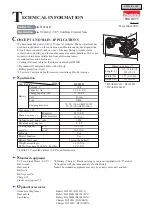
131
Glossary
Gigaset SL75 WLAN / en / A31008-M700-B112-1-7619 / glossary.fm / 24.4.06
Ve
rs
ion05.
08.2
005
GSM (Global System for Mobile
Communication)
Originally, European standard for
mobile networks. GSM can now be
described as a worldwide standard. In
the USA and Japan national standards
are now more frequently supported
than in the past.
H
Handset Mask
If your WLAN is divided into
subnets
,
you have to assign the handset to a
subnet. In order to define the subnet
and assign the handset to the subnet
you specify an
IP address
as the hand-
set mask. The handset mask is a special
subnet mask
.
Headset
Combination of microphone and ear-
piece. A headset enables easy hands-
free operation for telephone calls.
There are headsets available which are
connected to the handset by a cable.
Hotspot
Publicly accessible
access point
with
Internet access (e.g. at airports, railway
stations, hotels). There are often
charges associated with using
hotspots.
HTTP Proxy
Sever via which the network subscrib-
ers can process their Internet traffic.
Hub
Connects several subscribers in one
infrastructure network
. All data sent
to the hub by one network subscriber is
forwarded to all network subscribers.
See also:
Gateway
,
Router
.
I
IEEE (Institute of Electrical and Electronics
Engineers)
International body that defines stand-
ards in electronics and electrotechnol-
ogy, concerned in particular with the
standardisation of LAN technology,
transmission protocols, data transfer
rate and wiring.
IEEE 802.11
Standard for WLANs. Terminals may be
connected to
infrastructure networks
and also to
ad-hoc networks
.
Infrastructure Network
WLAN
with central structure: all sub-
scribers communicate via a central
access point
. The handset (like all ter-
minals) must be logged into the access
point with a
MAC address
and/or
IP
address.
Instant Messaging
(immediate exchange of messages)
Service that uses a client program to
allow chatting in real time, i.e. to send
brief messages to other subscribers on
the Internet.
Internet
Global
WAN
. A series of protocols have
been defined for exchanging data,
known by the name TCP/IP.
All subscribers are identifiable by
IP
addresses
.
DNS
assigns
domain
names
to
IP addresses
.
Important services on the Internet
include the World Wide Web (WWW),
Email, file transfer and discussion
forums.
Internet Service Provider
Enables access to the Internet for a fee.
IP (Internet Protocol)
TCP/IP protocol on the
Internet
. IP is
responsible for the addressing of sub-
scribers in a
network
using
IP
addresses
, and routes data from the
sender to the recipient. IP determines
the paths (routing) along which the
data packets travel.
















































